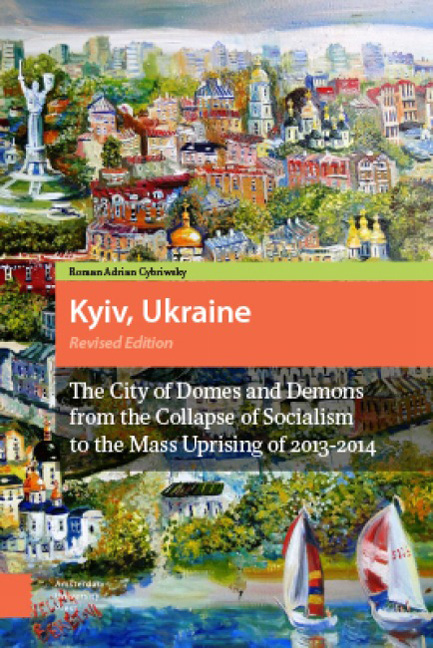 Kyiv, Ukraine
Kyiv, Ukraine Book contents
- Frontmatter
- Dedication
- Contents
- List of Illustrations and Tables
- A Note about Transliteration
- Preface and Acknowledgements
- 1 Far from Heaven
- 2 The Missing Museum of the History of the City of Kyiv
- 3 Sketches from the Capital
- 4 Soviet Ways, Post-Soviet Days
- 5 Historical Memory
- 6 The Center of Kyiv
- 7 A Geography of Privilege and Pretension
- 8 Landscapes of Struggle
- 9 “Suburbia”
- 10 Seamy Stories
- 11 The Defenders of Kyiv
- 12 Reflections
- Postscript
- References
- References
2 - The Missing Museum of the History of the City of Kyiv
Published online by Cambridge University Press: 10 December 2020
- Frontmatter
- Dedication
- Contents
- List of Illustrations and Tables
- A Note about Transliteration
- Preface and Acknowledgements
- 1 Far from Heaven
- 2 The Missing Museum of the History of the City of Kyiv
- 3 Sketches from the Capital
- 4 Soviet Ways, Post-Soviet Days
- 5 Historical Memory
- 6 The Center of Kyiv
- 7 A Geography of Privilege and Pretension
- 8 Landscapes of Struggle
- 9 “Suburbia”
- 10 Seamy Stories
- 11 The Defenders of Kyiv
- 12 Reflections
- Postscript
- References
- References
Summary
Life in Limbo
We begin with a tangled story about a wonderful museum that had the misfortune of becoming homeless. It is the Museum of the History of the City of Kyiv. I began to learn its story soon after I arrived in Kyiv for this project and ventured on a first outing. I had been there years earlier during a short visit to the city with my late father, and now I wanted to study the museum in detail as I began to immerse myself in any- and everything that I could learn about Kyiv. A handsome English-language guidebook that sells well in the city had reminded me where to go: 8 Orlyka Street in what was described as the “aristocratic Lypki” district, in a beautiful two-story baroque building from 1753-1755 that was once called the Klovskyi Palace, a residence for VIP guests to Pecherska Lavra, the Monastery of the Caves, the ancient golden-domed Orthodox religious complex that is Kyiv's leading visitor attraction. For a time later, the building housed the first Kyiv Gymnasium (a school) and then the Women's Theological Seminary. It became the city's official history museum in 1981. The guidebook promised that the museum's “carefully assembled collection gives a detailed picture of the past and the present of the Ukrainian capital” and that “the museum has been recognized as a center of knowledge about Kiev.” I did not doubt these claims, but I remembered the museum as somewhat of a clutter of thousands of old objects in glass cases. As it turned out, I was going to learn a lot more about the present from the museum than about the past.
There was no museum at 8 Orlyka; the guidebook was outdated. Instead, I was confronted with the new location of the Supreme Court of Ukraine, a guarded gate, and a security guard who told me that the museum had moved, but that he did not know where. I found out the next day that Kyiv's history was even closer to home, at 2 Khreshchatyk, in “Ukrainian House,” a newer, Soviet-style building on a low hill overlooking European Square. The building had been Kyiv's Lenin Museum for the several years between its construction in 1982 and the fall of Lenin's statue.
- Type
- Chapter
- Information
- Kyiv, UkraineThe City of Domes and Demons from the Collapse of Socialism to the Mass Uprising of 2013–2014, pp. 55 - 66Publisher: Amsterdam University PressPrint publication year: 2014


